F-15: the go-big-or-go-home US fighter jet that’s never lost a dogfight

Blog
Aerospace nerds like us geek out over all kinds of stuff: Innovative, high-performance microtube heat exchangers. Next-gen Moon buggies. The history of air conditioning in homes, vehicles, and aircraft. Flexible, ablative heat shields. Superalloys and polymer nanocomposites. The best pinball machine (The Addams Family FTW… fight us). The list goes on, but one of our favorite pastimes is to get in friendly arguments with other airplane nerds about which prop-driven/bomber/fighter/supersonic/whatever aircraft is better. In Britain this might be called playing Top Trumps, while in the good ol’ US of frickin’ A we just say “mine is better than yours,” along with some well-chosen words about our opponent’s mother. Well, we think we might have this argument won before it begins.
In our estimation, the McDonnell-Douglas/Boeing F-15 Eagle (and its Super Eagle and Slam Eagle upgraded variants) is the best jet fighter of all time…so far. Considering its incredible speed, acceleration, versatility, 3,500-mile range, durability, maneuverability, electronic warfare capability, lengthy service history, stellar air-to-air record, and its ability to carry up to 23,000 pounds of weapons and ‘splodey stuff, it’s no wonder the US Air Force is still ordering new F-15s and the aircraft is in use by multiple allied nations around the globe.
Let’s go over just a few facts that show why the F-15 is so incredibly badass, and why we’re right and you’re wrong. Bring it!
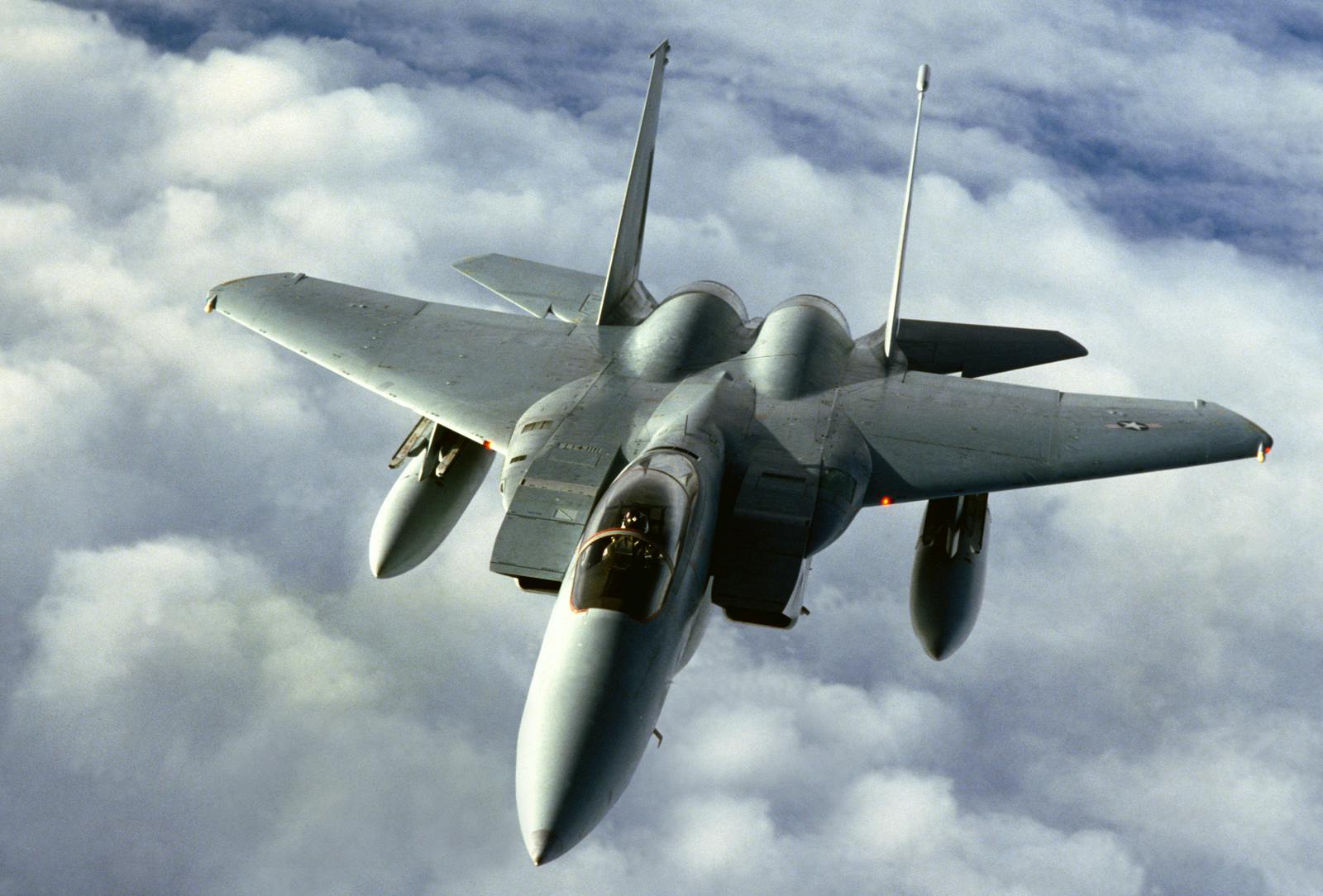
The F-15 has never lost a dogfight
Despite the initial criticism from the “fighter mafia” that the F-15 was too large and heavy to be successful as a dedicated dogfighter (a line of thinking which led to the groundbreaking—and still excellent—F-16 Fighting Falcon), the F-15 defied expectations and became the most successful modern fighter, with over 100 victories and zero losses in aerial combat. That’s right folks, the F-15 has an air-to-air record of 104 and 0. That’s better than the F-16 (76-1), the F-14 Tomcat (135-4), and even Mike Tyson (50-6). The F-15 was the first fighter that could attack multiple enemy targets simultaneously from distances of up to 100 miles, using its sophisticated, nose-mounted radar system and advanced air-to-air radar-guided missiles to blow up the bad guys before they even knew what hit them.
Around 125 US F-15s have been lost over the past 5 decades in mishaps, mostly due to pilot error in reduced visibility situations, ground incidents, or training accidents. This results in a service record of less than 2 aircraft destroyed per 100,000 flight hours, which is impressive considering the large numbers of aircraft still being flown.
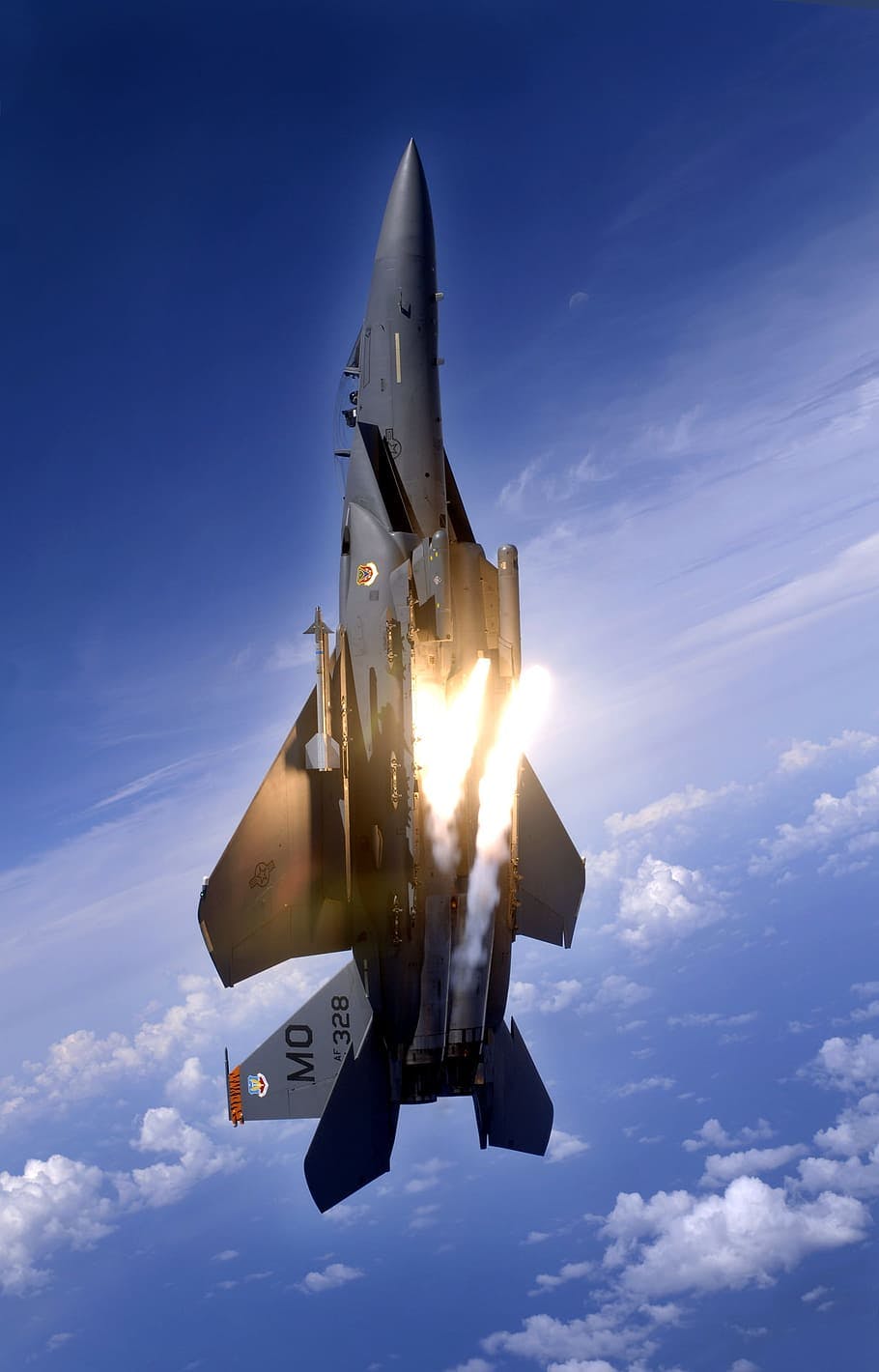
The F-15 is the first fighter that can accelerate straight up
The F-15A had a thrust-to-weight ratio of 1.17:1, meaning that for every pound of weight, it generated 1.17 pounds of thrust from its twin F100 engines. Depending on which source you read, the upgraded F-15K “Slam Eagle” has a thrust-to-weight ratio of up to 1.29:1, which is superior to every other fighter in the free world. The F-15 can go from ground level to 65,000 feet in just 122 seconds, and was the first US fighter jet that could fly straight up directly after takeoff… and still accelerate vertically. Is this thing an airplane or a rocketship?!? The answer is yes.
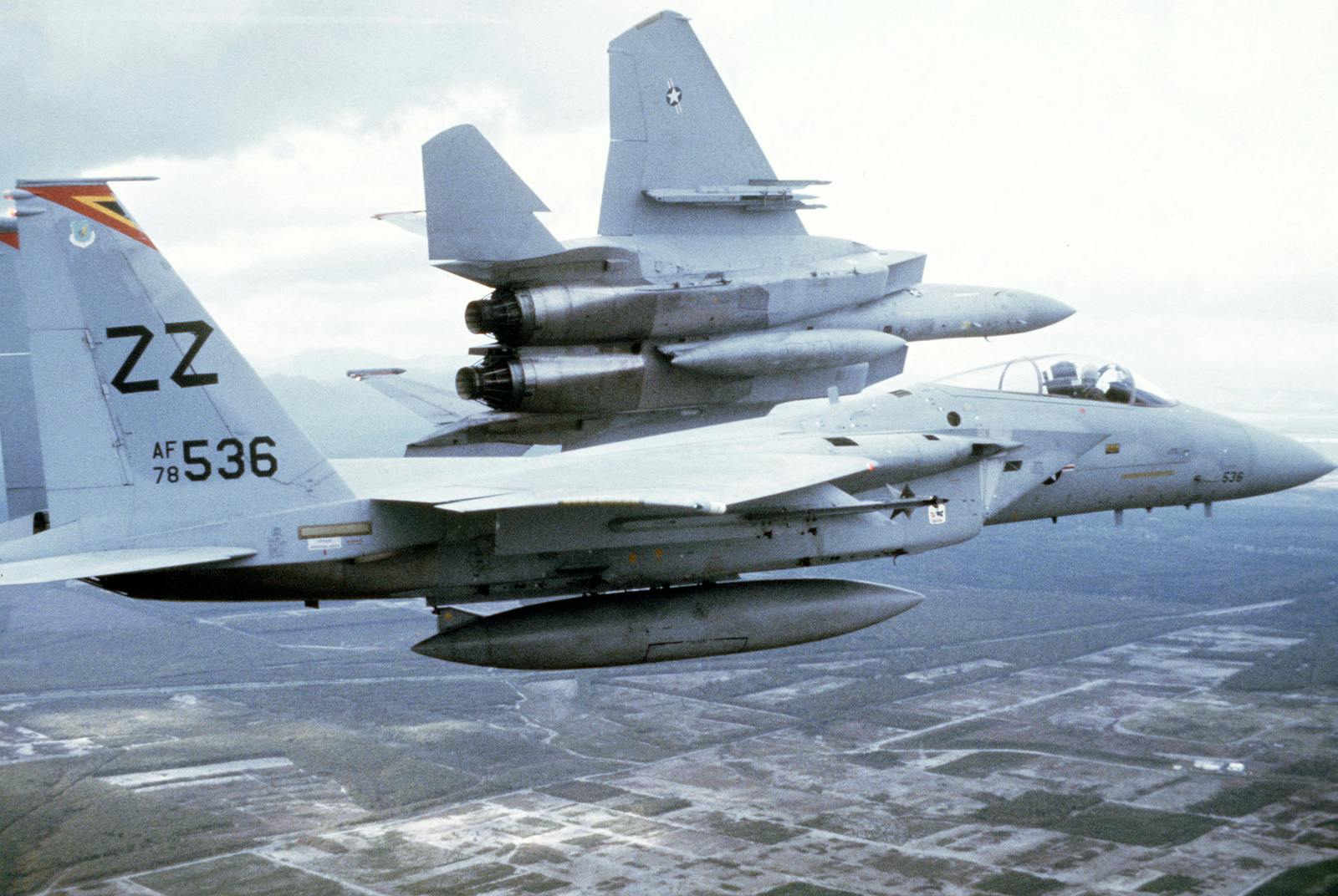
The F-15 is the fastest US fighter… EVER
In America, more is, well… moar. As Eleanor Roosevelt said in 1936, “America is all about speed. Hot, nasty, bad-ass speed.” The F-15 has been called “an American muscle car with wings” (though it can turn and burn better than any 1970s MOPAR). The first few variations of the Eagle used Pratt & Whitney F100 engines with 25,000 pounds of thrust each, but today’s F-15 variants use two extremely powerful General Electric F110-GE-119 afterburning turbofans with a maximum thrust of 29,000+ pounds each.
All of this adds up to a hella fast jet. Top operational speed is Mach 2.5, or between ~1,600 and 1,800 mph depending on air temperature. The F-22 Raptor that was intended to replace the F-15 is slower. The F-4, which set multiple speed records, is slower. The F-14 Tomcat is slower. The F-16 is slower. The F-18 is slower. The F-35 Joint Strike Fighter is slower. Some sources place the top speed of the F-18E Strike Eagle at 1,875 mph. In short, the F-15 is the fastest, most balls-to-the-wall jet fighter the US has ever produced.
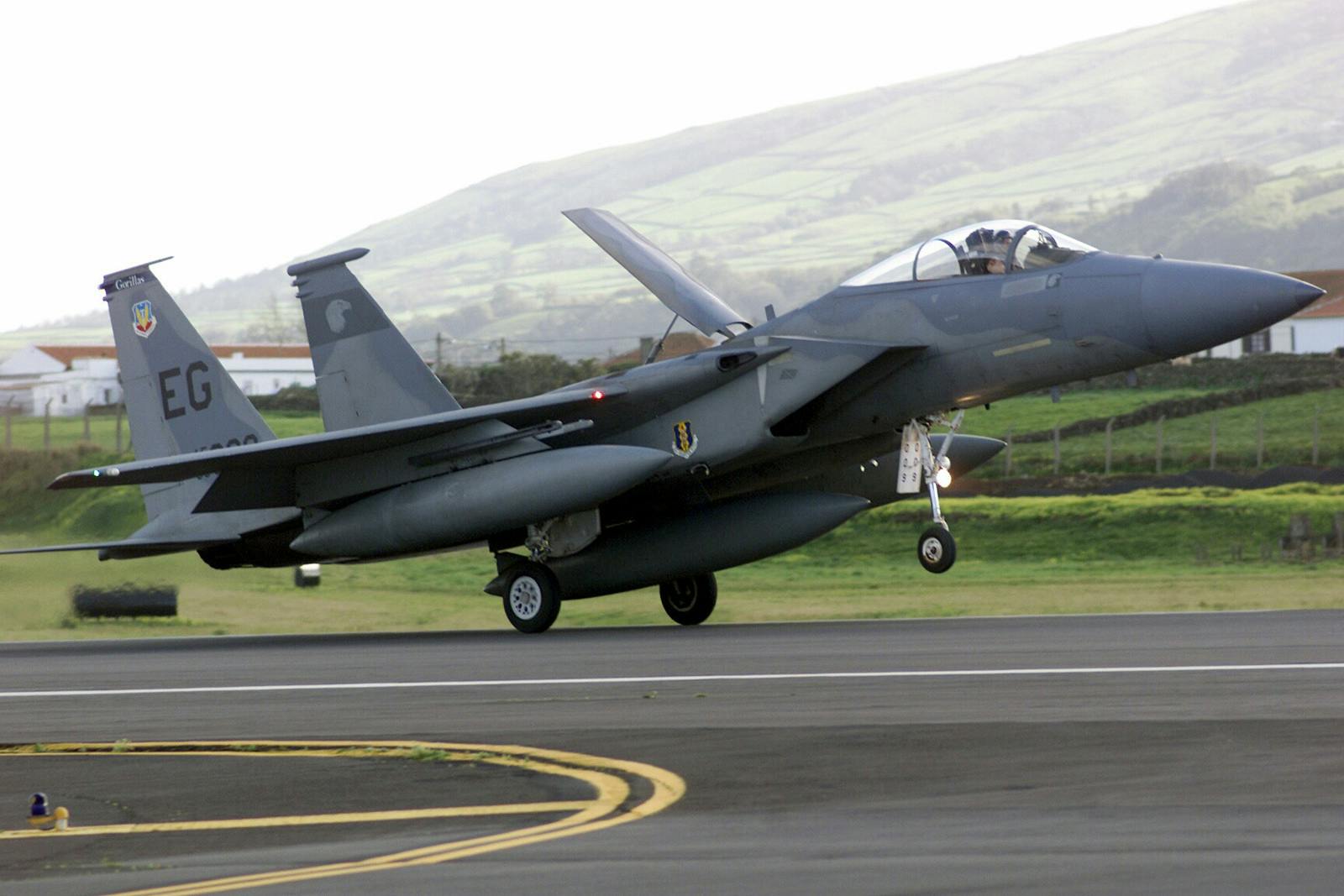
The F-15 can fly – and land – with one frickin’ wing missing
The claim that “our air superiority fighter is so good it only needs one wing” may sound akin to “I’d still beat you with one arm tied around my back,” but in this case it’s actually true. In 1983, an Israeli F-15D Eagle collided mid-air with an A-4 Skyhawk in a training exercise. The pilot of the Skyhawk ejected and his aircraft disintegrated. The right wing of the F-15 was sheared off about 2 feet (60 cm) from its base near the fuselage, but the two-man crew of the F-15 didn’t realize the extent of the damage, as leaking fuel was vaporizing and obscuring their view (plus the aircraft was rolling uncontrollably as you might expect).
The navigator/instructor ordered the pilot to eject, but the steely-eyed fighter jock pilot, Zivi Nedivi, was like, “Naw,” and decided to try to recover the aircraft, engaging the afterburner and eventually regaining control. He aimed for the nearest airfield, 16 kilometers (10 miles) away, and was able to maintain flight due to the lift generated by the large areas of the fuselage, stabilators, and remaining wing, combined with the super-powerful engines.
The one-winged F-15 landed at 480 kph (300 mph, twice the normal touchdown speed) to maintain the necessary lift, and its arrestor tailhook was torn off completely during the landing. Nedivi managed to bring the stricken Eagle to a safe stop approximately 20 feet (6 meters) from the end of the runway.
The pilot got out, shook his instructor’s hand, and only then did they notice that the entire right wing of their aircraft was missing. No other airplane has ever come close to equalling this feat.
Nedivi’s F-15 received a new wing two months after the incident, and went right back into service. How awesome is that?
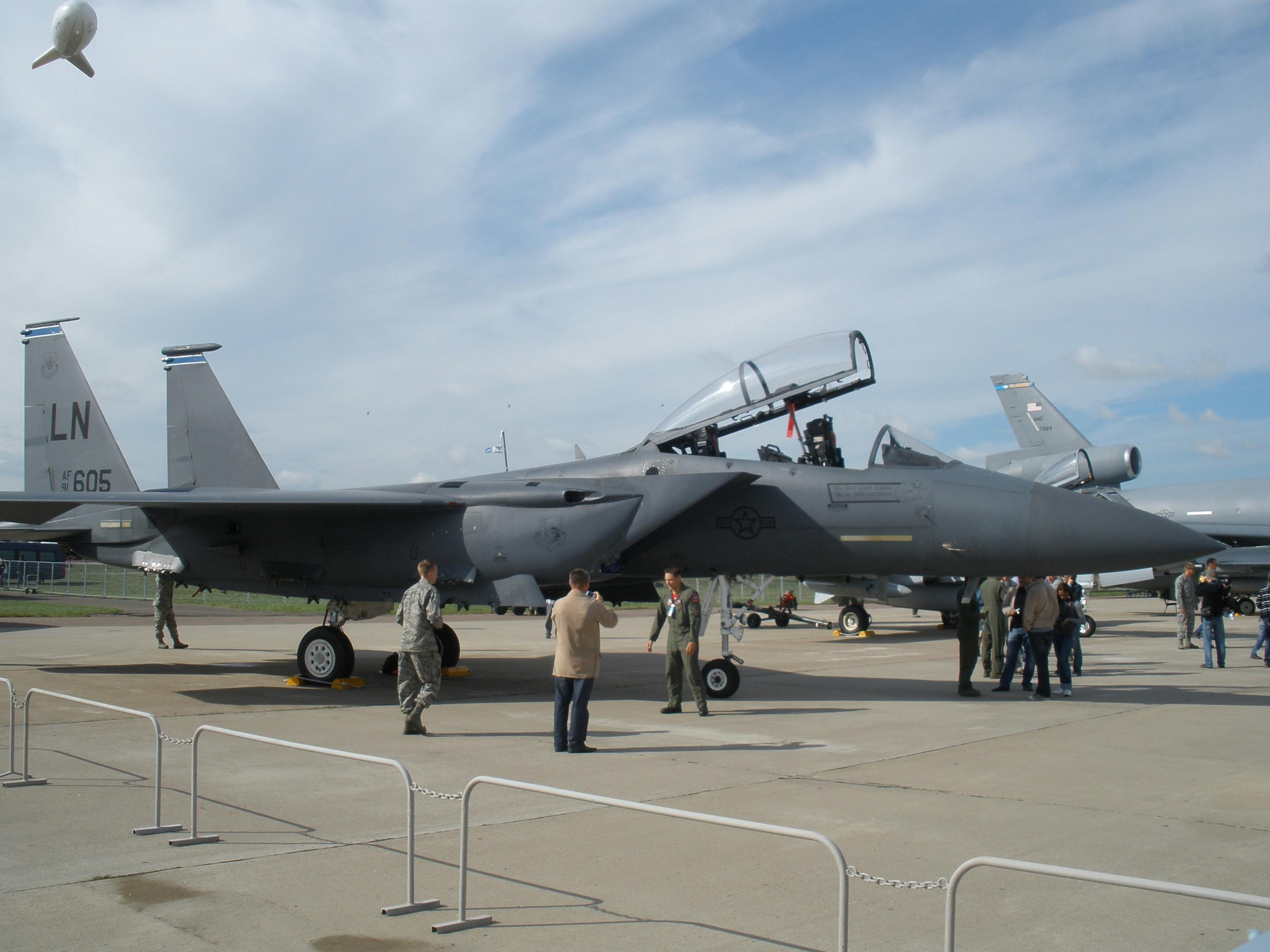
The F-15 is still being built and used in active service 50 years after its debut
The F-15 Eagle first flew in 1972, and entered service in 1976. No other US fighter has flown as long and still remains in the US arsenal, particularly in a front-line capacity. At least 1,198 have been made in the F-15 A/B/C/D/J/DJ variants, with an additional 61 F-15K Slam Eagles built for South Korea, and at least 525 of the upsized, upgraded Strike Eagle format jet fighters in the air so far, with more on the way. That’s right, the “outdated” 50-year-old F-15 is so damn good it’s still being built and sold to both the USAF and foreign militaries.
AeroTime says, “Two F-15EX fighters [were] delivered [to the Air Force] by the end of the first quarter of 2021. Eight pre-production aircraft were ordered in July 2020, to allow the military and the manufacturer to test and fully define their applications. The USAF hopes to eventually acquire 144 F-15EX fighters.”
“Block” upgrades, including the aforementioned F110 engine swap, have kept the F-15 relevant as technology has improved over the decades. The latest iteration of the F-15, the F-15EX, features an increased payload capacity, fly-by-wire controls, a digital cockpit, modernized sensors, improved radars, and powerful electronic warfare capabilities. While the aging airframe and non-stealth profile may not be up to par with the 5th- and 6th-generation fighters, the F-15 still provides the USAF with a less-complicated, multi-mission capable alternative to carry out airspace and base defense, close air support, deep strikes, reconnaissance, and electronic warfare.
There are also a number of F-15 variants sold and in service to foreign militaries around the world:
- Boeing has delivered 40 F-15SG aircraft to the Republic of Singapore Air Force (RSAF).
- Saudi Arabia has the original F-15S and 84 newer F-15SA aircraft, the latter offering advanced fly-by-wire capabilities.
- In 2017, Boeing was contacted to build 36 F-15QA variants for the Qatar Emiri Air Force (QEAF), with pre-delivery services and initial aircraft deliveries starting in 2021.
- Israel started procuring Boeing's F-15S variant back in the 1990s, and Boeing has delivered a super-upgraded version called the F-15I "Thunder" which boasts an incredible weapons profile and has become infamous for taking down Syrian MiG-21 and MiG-23 fighters.
The F-15EX is possibly more expensive than even the F-35… which means it’s better
Like car collectors who do full resto-mods on 1968 Camaros, the US military is finding out that upgrading and modernizing a “legacy” airframe like the F-15s adds up to a lot of donuts in these “interesting” financial times. And, if shopping at the Apple store or ordering from a restaurant menu in America has taught us anything, it’s that if something is more expensive, it has to be better, right?
The original 1976 unit flyaway cost of an F-15 was around $10.5 million in 1976 dollars, also figured at $27.2 million in 1998 simoleons. Recently, BreakingDefense.com reported, “The ‘Gross Weapons Systems’ cost includes the ‘flyaway cost’ and the per-jet share of the cost of unique equipment, simulators, and standing-up depots needed to support the aircraft. The gross weapons system cost of an F-35A adds up to $98.2 million in FY22. The defense department calculates the F-15EX at $110 million. But that does NOT include the cost for simulators, EPAWSS, or the targeting and IRST pods required for combat. Adding in those costs brings the gross weapons systems cost for the F-15EX to $136.7 million — $38.5 million or 39 percent more than a fully loaded F-35A.”
To be fair, our analysis of the F-35 put its actual price (at least of the top-of-the-line STOL variants) at around $135 million per copy, so it’s almost as good as the F-15.
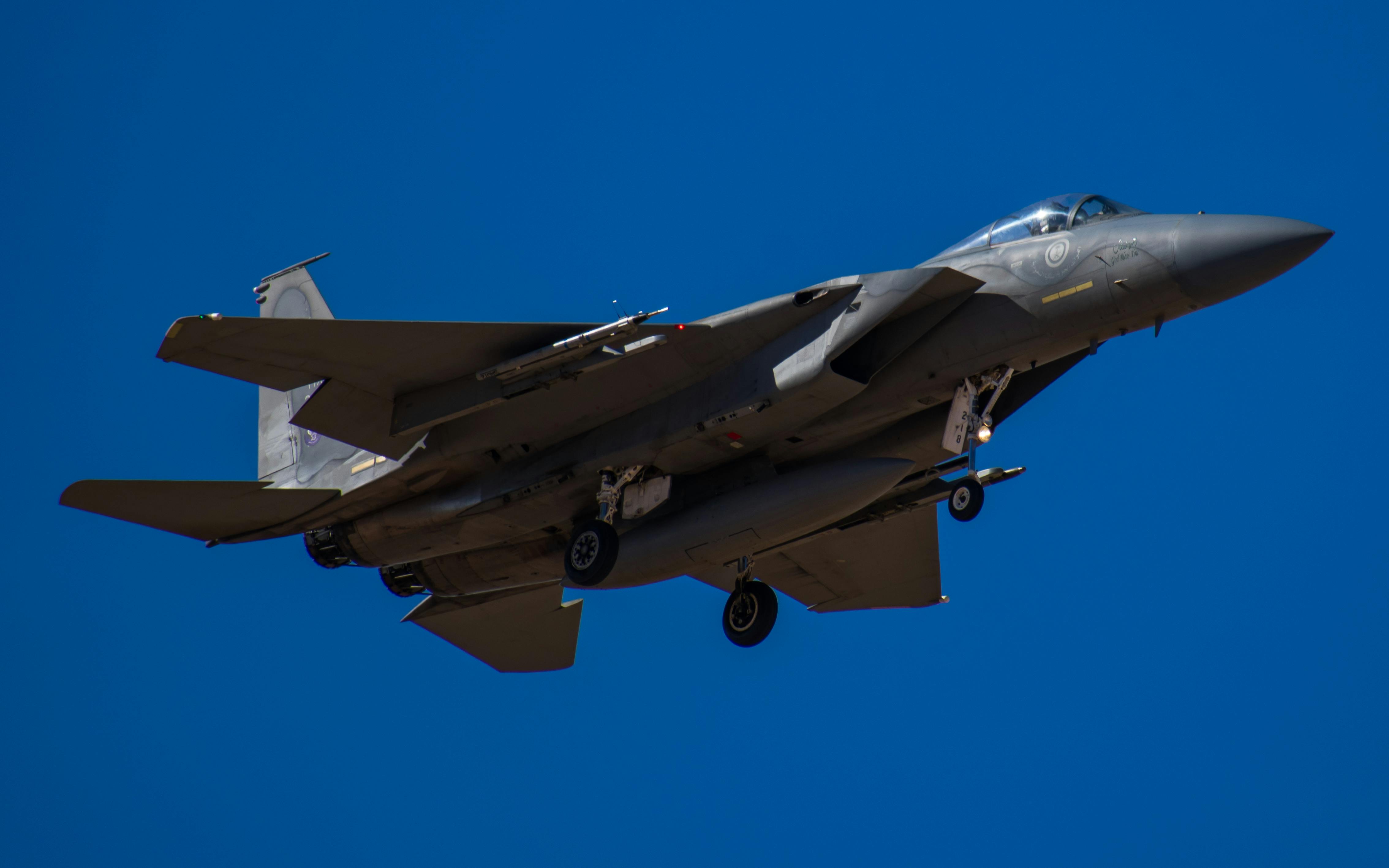
The F-15 can do everything, and do it well
The F-15 was intended as the ultimate air superiority fighter, and it blew that task (and every opponent) out of the water… er, sky. As noted above, no other fighter in the world has a better record in actual air combat. However, in 1988 the Strike Eagle variant debuted, with a heavier emphasis on deep-strike/ground attack, close air support for infantry, and eventually electronic warfare capabilities. DefenseNews says, “The Eagle Passive/Active Warning and Survivability System will let the F-15E monitor, jam and deceive threats in highly contested environments…. It uses sensors, electronic countermeasures and algorithms to provide integrated radar warning, geolocation, situational awareness and self-defense technology.” Additionally, “The F-15EX can shoot from a significantly increased range, farther than any other fighter in the US Air Force arsenal [emphasis added], and provides the unique capability of holding 12 AMRAAMs [AIM-120 Advanced Medium-Range Air-to-Air Missile] or other large ordnance.”
Former F-15 and F-35 pilot Joseph Stenger told Popular Mechanics, “What separates the F-15E is the air-to-ground capability, especially in the close-air-support (CAS) mission set. The sensors, long on-station time, interoperability, and a vast array of available weaponry really set the F-15E apart from other fighters”
The F-15 can even shoot down frickin’ satellites in orbit
Nope, we’re not kidding. When the United States needed to include destroying the USSR’s satellites as part of its defense plans, intel showed that the Russians could detect a ground-to-orbit missile launch and potentially evade an anti-satellite missile. So the US developed an anti-satellite missile designed to be fired by an airborne F-15. Wearethemighty.com reports, “The system was successfully tested by Air Force Maj. Wilbert D ‘Doug’ Pearson, who is still the only pilot with an air-to-orbit kill.” Check and mate.
So there you have it… our indisputable argument in favor of the F-15’s number-one all-time ranking on the list of the greatest jet fighters. But don’t EVEN come at us about the best pinball machine. (Addams Family. Trust us.)
–By Jeff Davis, Intergalactic Scribe
Sources:
https://www.af.mil/About-Us/Fact-Sheets/Display/Article/104501/f-15-eagle/
https://www.hotcars.com/americas-fastest-fighter-f15e-strike-eagle/
https://breakingdefense.com/2022/04/air-forces-math-on-the-f-15ex-and-f-35-doesnt-add-up/
https://www.popularmechanics.com/military/aviation/a32055606/f-15-history/
https://en.wikipedia.org/wiki/McDonnell_Douglas_F-15_Eagle
https://en.wikipedia.org/wiki/McDonnell_Douglas_F-15E_Strike_Eagle#
https://www.airforce-technology.com/projects/f-15k-slam-eagle/
https://www.wearethemighty.com/mighty-tactical/f-15-best-fighter-jet-ever/
https://migflug.com/jetflights/the-combat-statistics-for-all-the-aircraft-currently-in-use/
https://migflug.com/jetflights/f-15-lands-with-one-wing/
https://theaviationgeekclub.com/time-israeli-air-force-f-15-baz-landed-one-wing-missing/
https://world-defense.com/threads/thrust-to-weight-ratios-of-all-fighter-planes.1316/